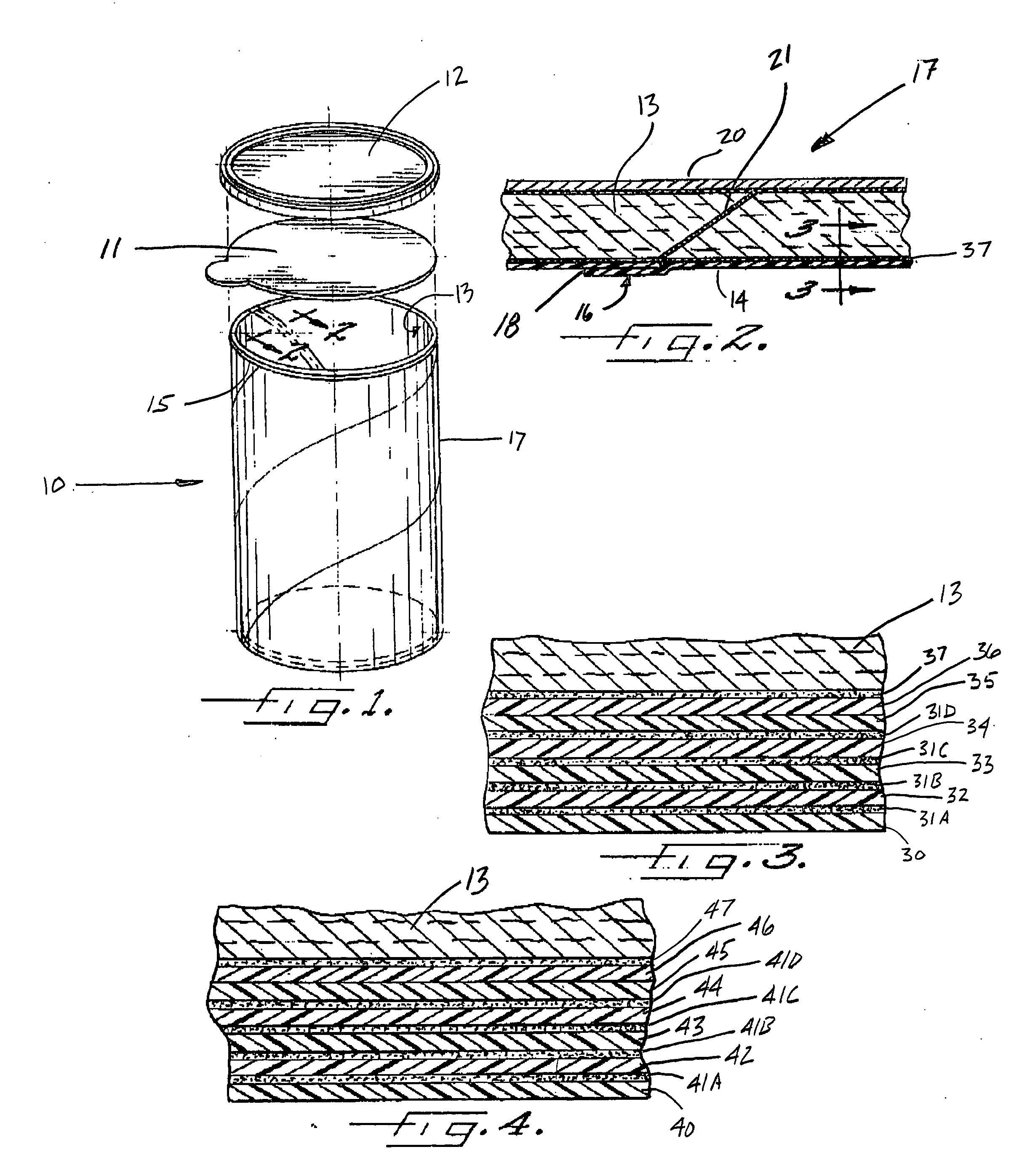Low cost film composite can liner
a film composite and can liner technology, applied in the field of tubular composite container making methods and apparatuses, can solve the problems of difficult sealing, corroding foil, discoloring or otherwise adulterating products, and spoiling food products stored within containers, so as to eliminate the need for costly folding operations, reduce cost, and improve abrasion protection
- Summary
- Abstract
- Description
- Claims
- Application Information
AI Technical Summary
Benefits of technology
Problems solved by technology
Method used
Image
Examples
Embodiment Construction
[0040] The present inventions now will be described more fully hereinafter with reference to the accompanying drawings, in which some, but not all embodiments of the invention are shown. Indeed, these inventions may be embodied in many different forms and should not be construed as limited to the embodiments set forth herein; rather, these embodiments are provided so that this disclosure will satisfy applicable legal requirements. Like numbers refer to like elements throughout.
[0041] With reference to FIGS. 1 and 2, a composite container 10 is shown having an unsupported liner in accordance with the present invention. Although illustrated as having a circular cross-section, the tubular container 10 may have any cross-section shape that can be formed by wrapping the tube around an appropriately shaped mandrel. For example, the tube can be formed in a rectangular shape with rounded corners. The embodiment illustrated in FIG. 1 is particularly advantageous for packaging potato crisps ...
PUM
| Property | Measurement | Unit |
|---|---|---|
| polymeric | aaaaa | aaaaa |
| density | aaaaa | aaaaa |
| shape | aaaaa | aaaaa |
Abstract
Description
Claims
Application Information
 Login to View More
Login to View More - R&D
- Intellectual Property
- Life Sciences
- Materials
- Tech Scout
- Unparalleled Data Quality
- Higher Quality Content
- 60% Fewer Hallucinations
Browse by: Latest US Patents, China's latest patents, Technical Efficacy Thesaurus, Application Domain, Technology Topic, Popular Technical Reports.
© 2025 PatSnap. All rights reserved.Legal|Privacy policy|Modern Slavery Act Transparency Statement|Sitemap|About US| Contact US: help@patsnap.com



